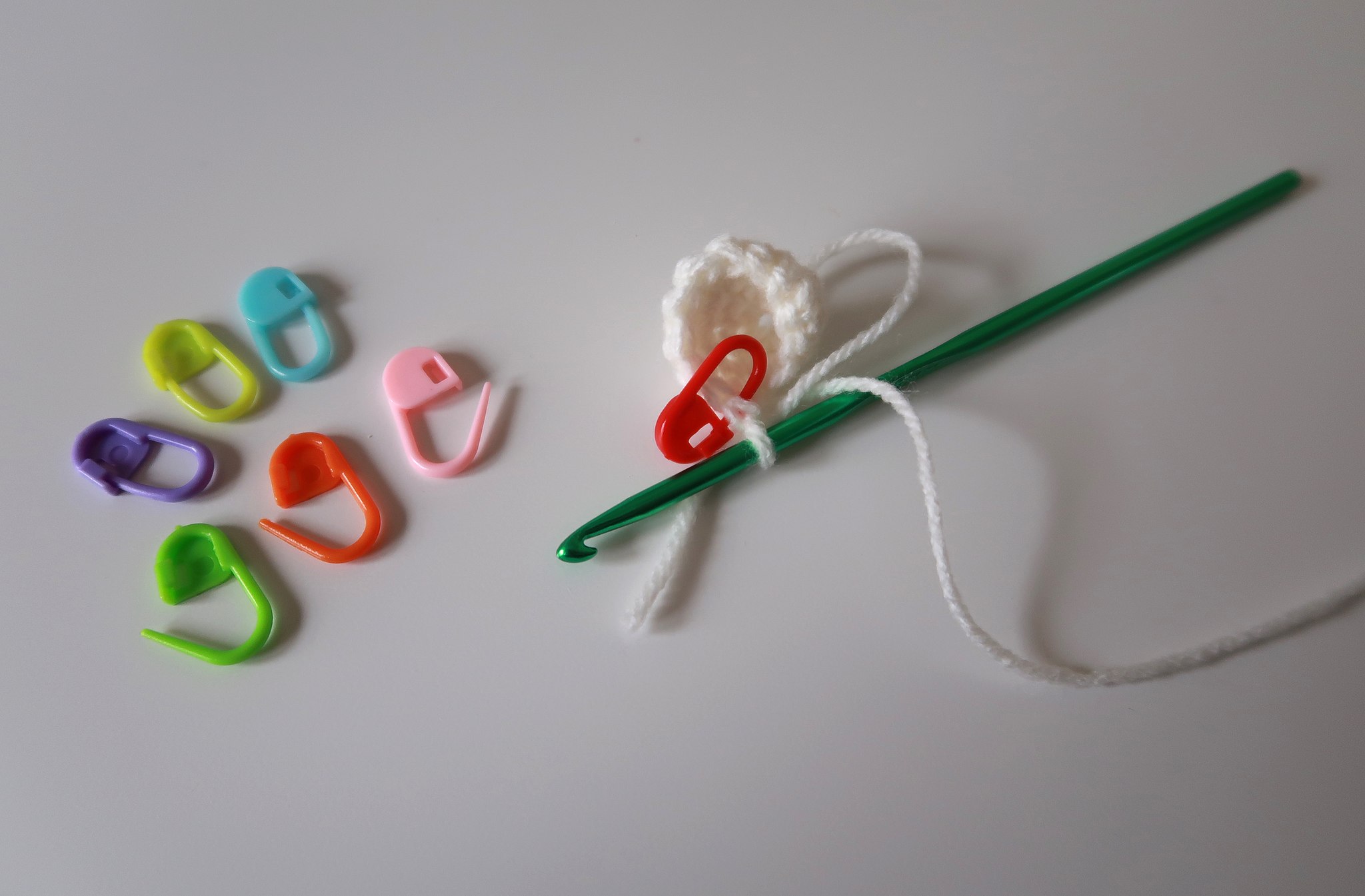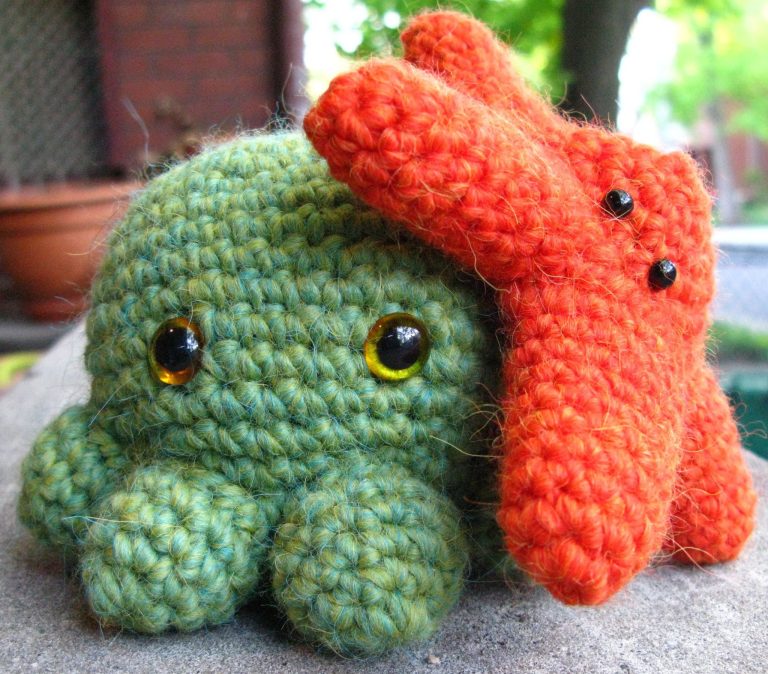Cold, dark and dreary, winter can get the best of us sometimes. While we endure those last dismal weeks before spring brings vibrance and vitality back to the world, a small creative challenge may be just the thing to lift our spirits. Amigurumi is not only fun to say, it’s also fun to make, more fun to give, and still more fun to receive. What is it?
Amigurumi is a Japanese term for small dolls (usually animals) made from yarn, and the art of making them. They may be crocheted or knitted, but the stitches are fairly basic and easy to master. Unlike the daunting task of knitting a sweater or socks; most amigurumi can be completed in a couple of hours. It is a mindful activity that engages your creative energy and results in a cute and cuddly companion or gift. What’s not to like?
Advantages to Amigurumi
As you might imagine, amigurumi is an inexpensive hobby. Yarn, a crochet hook or pair of knitting needles, and a few minor accessories are all you need to get started. So there is little risk of investing a lot of money — or space — into something you might only do now and then. Yet amigurumi is also an excellent introduction to the world of knitting and crochet. These portable skills will last a lifetime, and there are plenty of perks for the performer.
Strengthen the mind and calm the heart
Learning new skills helps generate new neural pathways — which transmit messages to and from the brain. Activities like amigurumi require simultaneous thinking, motor skills and attention; which can help reduce the risk of cognitive impairment in seniors; and actually benefit all age groups. The rhythmic activity releases the neurotransmitter serotonin, enhancing learning and memory.
The repetitive movement of making one stitch after another is also certifiably calming. Serotonin regulates anxiety and mood; and once the skill is learned, the activity can reduce levels of cortisol — the stress hormone. Many find it meditative to crochet and knit, and research from Harvard Medical School’s Mind and Body Institute reports that knitting helps reduce blood pressure.

A gratifying and giftable result
Success
You are now signed up for our newsletter
Success
Check your email to complete sign up
Amigurumi has a reliably pleasant outcome. Unlike creative cooking, which can be dreadfully disappointing, goofing up an amigurumi pattern can only bring added character and charm. Still, if you are absolutely horrified with your creation, you can unravel and start again, with better luck next time.
Amigurumis make unique, personal gifts, which can remind the receiver that a little bit of you is there in spirit. You can count on their innocent expression and cuddly form to warm anyone’s heart.
Amigurumi for the spirit
Amigurumi, like any creative endeavor, facilitates spiritual growth. Besides relieving stress and anxiety, the creative process can help us process heavy negative emotions and make peace with ourselves.
It’s not hard to become immersed in amigurumi, and you may experience the highly-desirable state of mindfulness as you focus your energy on a creative project. Entering the flow state, or “the zone,” feels happily relaxed, yet attentive; with creativity and productivity at your fingertips.
If all this sounds good, let’s look at the few items you need to get started.
Amigurumi materials
Yarn is the most fundamental ingredient in this recipe, but there are so many choices to make here. Color, fiber, texture and weight are all things you’ll want to consider. While some of these will be dictated by your pattern, there is still much flexibility for your own tastes.
Both crochet hooks and knitting needles come in a range of sizes. You can purchase a whole set of either for around $10.00, but be sure to at least have the ones that work with your yarn weight.
Crochet hooks may be labeled with a number, a letter, or both, getting increasingly larger with higher numbers or progression along the alphabet. Similarly, yarn weight gets increasingly thicker with larger numbers. Knitting needles increase in size with the number in the US, but decrease in size with increasing numbers in the U.K.
In any case, a skein of yarn will likely have recommended hook and needle sizes to work with on the packaging.

Stitch markers are basically colorful plastic safety pins that you use to remember where you started. You can use other place markers — like a piece of colored yarn — but these are convenient and inexpensive accessories that make your work easier.
Most amigurumi will require eyes. While you can sew on buttons or stitch on detailed and expressive peepers; black, plastic, safety eyes make this part effortless and perfect every time. They press in between stitches like a bolt, with a plastic nut attached on the backside so they don’t end up in any child’s windpipe.
Finally, you will need to stuff your work. Polyester fill is the most common stuffing, but alternatives like cotton balls, shredded scraps of material, or bits of yarn that are too short for a project can also make good stuffing. Rice used in a tightly stitched pattern will give the body a nice weight and texture. You could also add dried herbs for a fresh scent.
Getting started
Crochet is generally suggested for beginners, and we want you to get off to a flying start. This type of needlework usually starts with a slip knot followed by a chain of stitches — a technique you can practice to familiarize yourself with the basic movements of crochet.
Amigurumi, however, usually starts with a magic circle — a loose slip knot upon which you put your first stitches and then pull it tight to start any spherical shape. After that, your next hurdle will be interpreting the instructions.
For the sake of brevity, abbreviations are used almost exclusively, making the whole pattern completely unreadable if you’re not in on the code. Fortunately, there are only a handful of commonly used terms, and we can explain them here.
| mc | Magic circle or magic ring, made with a slip knot, with the tail stitched over. |
| sc | Single crochet — meaning you put one stitch into the one below it. |
| inc | Increase — meaning you put two single crochet stitches into one. |
| dec | Decrease — meaning you skip a stitch. This could also be denoted as 1 sc in next 2 |
| R | Row — starting with your magic circle (row one) you will move up through your pattern with increasing rows (the stitch marker tells you where your row starts and ends). |
| yo | Yarn over — meaning you wrap the yarn over your hook |
| dc | Double crochet — meaning you wrap the yarn around the hook once before inserting into the chain, then hook the yarn and pull through the chain, then wrap the yarn over again and pull through the first two loops, and then pull through the remaining two loops. |
Typical instructions, like the free pattern for the octopus in the feature image, found on octopus revolution, look something like this:
“Body
start with a magic loop ring.
Row 1: 6 sc into magic loop (pull tight) (6sc)
Row 2: 2 sc into each sc around (12 sc)
Row 3: 1 sc, 2 sc in next sc repeat around (18 sc)
Row 4: 2 sc, 2 sc in next sc repeat around (24 sc)
Row 5: 3 sc, 2 sc in next sc repeat around (30 sc)
Row 6: 4 sc, 2 sc in next sc repeat around (36 sc)
Row 7: 5 sc, 2 sc in next sc repeat around (42 sc)
Row 8- Row 12: 1 sc in each sc around (42 sc)
Row 13: 5 sc, 1 sc in next 2* repeat around (36 sc)
Row 14: 1 sc in each sc around (36 sc)
Row 15: 4 sc, 1 sc in next 2* repeat around (30 sc)
start filling and put in eyes here
Row 16: 3 sc, 1 sc in next 2* repeat around (24 sc)
Row 17: 2 sc, 1 sc in next 2* repeat around (18 sc)
Row 18: 1 sc, 1 sc in next 2* repeat around (12 sc)
Row 19: 1 sc in next 2* repeat around (6 sc)
stuff stuff stuff! finish off.
Legs
Make 8. Only place them up a bit higher than I did if you actually want to get 8 on the little guy.
Start with magic loop ring
Row 1: 6 sc in magic loop, pull tight
Row 2: 2 sc in each sc repeat around (12 sc)
Row 3: 1 sc in each sc around (12 sc)
Row 4: 3 sc, 1 sc in 2 sc*, 3 sc, 1 sc in 2 sc* (8 total)
finish off the legs and then sew them on the body at your place of choice.
By not finishing off the row (only 8 scs) , it makes them slanted and they’re easier to attach.”
If you can read that, you are ready to begin your amigurumi adventure.
There are whole books of amigurumi patterns; but you can also find both patterns and videos online — free, and in abundance. An octopus is always fun, but with Easter just around the corner, you might like to try this simple bunny.
From cats and cacti to donuts and dinosaurs, you can find simple patterns for just about anything that suits your fancy. Or, if you are already skilled at crochet, take on a bigger challenge with this exquisite rabbit from the collection of Chinese zodiac animals. It is the year of the rabbit, after all.













